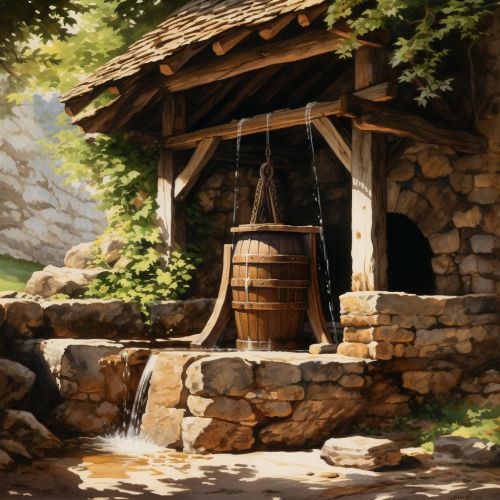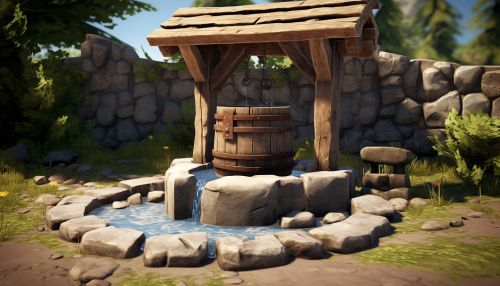Water well
Introduction
A water well is a man-made structure or excavation created in the ground by digging, driving, boring, or drilling to access groundwater in underground aquifers. The well water is drawn by an electric submersible pump, a trash pump, a vertical turbine pump, a handpump, or a mechanical pump. It can also be drawn up using containers, such as buckets, that are raised mechanically or by hand.
History
Wells have been constructed at least since the Neolithic period. The oldest known wells, located in the region of modern-day Israel, date to about 10,000 years ago. These Neolithic wells were often lined with stone, and were sunk deeply into the earth to reach groundwater.


Types of Wells
There are three main types of wells: dug, driven, and drilled.
Dug Wells
Dug wells are the oldest type of well, and are typically created by digging a hole in the ground with a shovel or backhoe. The well is then lined with stones, brick, tile, or other material to prevent collapse. Dug wells have a large diameter, often a meter or more, and are shallow, typically less than 15 meters deep.
Driven Wells
Driven wells are created by driving a small-diameter pipe into soft earth, such as sand or gravel. A well screen is attached to the bottom of the pipe to filter out sand and other particles. Driven wells are relatively cheap and easy to construct, but they can only be used in areas with a high water table and soft earth.
Drilled Wells
Drilled wells are created by drilling a hole in the ground with a drilling rig. The hole is typically lined with a steel or plastic casing, and a well screen is installed at the bottom to filter out particles. Drilled wells can be hundreds or even thousands of feet deep, and can penetrate hard rock, sand, and gravel.
Water Extraction
Water can be extracted from wells in several ways. In the past, water was often drawn up by hand using a bucket tied to a rope. Today, most wells use a pump to bring water to the surface. The type of pump used depends on the depth of the well, the yield of the well, and the use of the water.
Hand Pumps
Hand pumps are used in many parts of the world where electricity is not available. They are simple to operate and maintain, and can be used to extract water from shallow wells.
Mechanical Pumps
Mechanical pumps are used to extract water from deeper wells. They are powered by an engine, and use a piston or rotary mechanism to bring water to the surface.
Electric Submersible Pumps
Electric submersible pumps are the most common type of pump used in modern wells. They are installed in the well casing, and use an electric motor to drive a series of impellers that push water to the surface.
Water Quality
The quality of well water can vary greatly, depending on the geology of the area and the depth of the well. In general, deeper wells tend to have better water quality, because the water has been filtered by the earth. However, well water can still be contaminated by natural substances, such as iron, manganese, and radon, as well as human-made pollutants, such as pesticides, fertilizers, and industrial waste.
Testing
It is important to test well water regularly to ensure it is safe to drink. Most experts recommend testing well water at least once a year for bacteria, nitrates, and other contaminants. If the well is near a source of pollution, such as a septic system or farm, more frequent testing may be needed.
Well Construction and Maintenance
Proper construction and maintenance of a well is crucial to ensure a safe and reliable water supply. The well should be located away from potential sources of contamination, such as septic systems, livestock, and chemical storage areas. The well casing should be sealed to prevent surface water from entering the well. The well should also be capped to prevent insects, small animals, and other contaminants from entering the well.
